|
So this is a sort of First Play! Love Letter: Adventure time, like Love Letter: Batman is a reskin of the original Love Letter. I'm not going to go into any particular detail here and will only list the notable differences. if you want to know more, the blog on original can be found here. Unsurprisingly, all the art featured throughout the game is sourced from the cartoon and the characters will be recognisable to fans. If you're not a fan, it's quirky and very cartoony-styled gentle parody of the original artwork with a bright palette, a style I find perfectly acceptable. Annoyingly though, some of the cards have been renamed; 'The Prince' becomes 'Hero', 'Handmaid' becomes 'Companion' and so on. I know that it's probably a better fit with the show's narrative and theme but it still means that even players who know Love Letter well will be referring to the rules! Instead of standard hearts or cubes, Love Letter: Adventure Time uses bright, multicoloured acrylic 'gems' to track scores and I have to admit they are pretty nice. With a couple of exceptions, the rules are broadly speaking, identical to vanilla Love Letter. Luckily, these additional rules don't break the game like some other reskins do but by the same measure, nor do they add anything to it and truth be told, can be easily ignored. Which is something I would do since I've always found the original Love Letter to have the best implementation of the rules. So is it worth getting Love Letter: Adventure Time? If you've already got some version of Love Letter; unless you're a completionist or a fan of the cartoon then you can skip this. However, if you're a fan and don't have a copy of Love Letter, it's a fantastic game and you should definitely get one and this version is a good as any. In fact if you don't have a copy of Love Letter, you should get one regardless!
0 Comments
14th June 2022 It's a Tuesday and we're with the Woking Board Gaming Club at The Sovereigns for some gaming entertainment. I always thought a good leader leads by example and doesn't hide? On the other hand most leaders don't have to contend with 4 feuding factions and the undead! Hidden leaders is a fantasy themed sort of hidden role (Leader!) game with a dash of social deduction. What's in a game?
There aren't too many components to Hidden Leaders but they're all of a good quality as you'd expect from any modern game. The cards are OK, the board is fine and the meeples are of a satisfyingly chunky quality. Art-wise, Hidden Leaders is fantastic, each character is unique and has their own name and illustration, all of which are cartoony, brash and colourful, it's a style that appealing and perfectly fits the game's slightly humorous and not too serious theme. There are icons for the 4 factions which are easily understood as well as a handful of other icons. It doesn't take long to comprehend all of this and it won't prove an obstacle. How's it play?
On to play Hidden leaders is a game primarily about manipulating the 2 meeples on the board because their relative positioning at the game end will determine which faction wins the game and by extension which player wins. This done by recruiting i.e. playing hero cards into your personal playing to create your own band of heroes. There are 4 factions. Black: Undead. Blue: The Water Folk. Green: The Hill Tribe. Red: The Imperial Army. The game uses usual a traditional turn structure with the active player completing their action before play progresses to the player to their left. During the active player's turn, the following must occur.
Endgame The game continues until any player has put 5-8 face-up hero cards into play (Dependant upon player count.), face-down heroes do not count for the purpose of triggering the game end. When this occurs, the current turn is the last turn and we go to declaring a winner. First, the victorious faction must be determined, each one has their own winning criteria based on the positioning of the 2 meeples on the track. Black (Undead.) wins if both meeples are in the black area of the track, that is on spaces 9-12. This is regardless of the positioning of the meeples relative to each other. Blue (Water folk.) win if both meeples are on the same or an adjacent space on the track - provided of course they are both not in the black spaces. Red (Empire.) wins if the red meeple is 2+ spaces further along the track than the green meeple, so long as both meeples are not in the black area. Green (Tribe.) wins conversely, if the green meeples is 2+ spaces further along the track than the red meeple, again, Next; players reveal their hidden leader cards and face-down hero cards. The player whose leader is aligned to the winning faction, wins! It's quite likely that more than player will have a leader aligned to the winning faction. If this is the case, then the player with the most hero cards aligned to the winning faction wins. Overall
The first thing to mention is the game's asymmetrical winning criteria, it's something I've not seen elsewhere and is key to Hidden Leaders' appeal and informs all of the gameplay and tactics mentioned below. The objective is pretty straightforward in Hidden Leaders. Players will not only be trying to manipulate the meeples to their own advantage but also trying to deduce the motives of their opponents from their actions. This will allow players to try and anticipate their opponent's actions to their own advantage. E.g., a player moves the red meeple up closer to green one which is ahead, is it because they want to bring them together to want the red meeple to overtake the green or do they want to put the meeple in the black area. In this example, one single move can work towards the winning conditions of 3 factions. Interestingly, when cards are discarded to the wilderness, it's face-down so others can't try and see which cards are essentially worthless to the discarding player. Further more, players will at least 1 face-down hero. All of this is compounded by each leader being aligned to 2 factions so it can be hard to try and guess which faction they're supporting. It's a great use of 'imperfect knowledge' mechanics that will keep players on their toes. Hidden Leaders is a fairly easy to learn rules-light game, it mixes this accessibility with a higher level of play and depth of complexity that comes from trying to anticipate the actions of opponents that will make players think. So, while theoretically the game has a reasonably quick play time, some players will spend a lot of time analysing their options and next move. In short; the analysis paralysis can be strong with this one and it seemed to take longer than expected. But that can be down to the players. It should also be noted that whilst Hidden Leaders doesn't really have direct interaction between players, it definitely has a bit 'take that' mechanics. It's not too harsh to be fair but it's there and I for some players this is a no-no. Having said all of that, I found the gameplay a little slow, it felt like 1 card-play/actions wasn't quite satisfying enough and it felt like there was a bit too much downtime between turns, although we did play with a player count at the higher end. Otherwise I can't fault Hidden Leaders. If card games fairly heavy on deductive reasoning and trying to gauge the motives of other players are something you like, you'll probably find this engaging and enjoyable. 20th April 2022 It's a Wednesday and we're round Simon's for an evening of gaming. Unlock! The Escape Game are a series of games drawing inspiration from escape room games and as you'll have gathered from the name, Star Wars: Unlock is a Star Wars themed Unlock! game. Time to escape Star Wars! Note: Unlock! games come with 3 scenarios and in the case of Star Wars: Unlock!, we played the Secret Mission on Jedha scenario, one of the harder scenarios and which involved being nasty Imperial spies running round a desert. What's in a game?
Star Wars: Unlock! is a card game with a map, quality wise it's exactly what you would expect of cards and a small paper map, which is to say; perfectly acceptable. Art-wise, like all Star Wars licensed games I've seen, the quality is consistently high throughout. I don't know whether the art was created specifically for this game or was sourced from what must be a huge archive of art that has been produced and accumulated over the decades but regardless, it's all looks good and has a appropriately Star Wars feel to it A few icons are used throughout the game, they're pretty clear and self-evident, I can't imagine they would prove an obstacle to players. How's it play? Setup
On to play Star Wars: Unlock! is all about discovery and deciphering clues which will eventually lead to the scenario's conclusion. Functionally, the game works a little like a gamebook where players would get to choose which numbered paragraph to read, except in this game it's done with numbered cards instead of paragraphs. There's also a bit more to Star Wars: Unlock! than most gamebooks though, especially in relation to how the app is utilised. It's tricky to describe how the game plays, especially without some sort of spoiler but basically, the players collectively try to solve the puzzles presented to them. What follows are descriptions for actions players can take.
Endgame There's no way to lose Star Wars: Unlock! per se, when the countdown reaches 0 it instead simply goes into 'negative time'. After reaching a scenario's conclusion, the app will then rate the player's collective performance from 1-5. Computer says you get only 1 Star! Overall
Star Wars: Unlock! pulls some clever tricks with how it uses cards and how it combines them with the app to provide some engaging obstacles to overcome. We're not geniuses by any stretch but nor are thick, so for the most part the scenario was well balanced, we were stumped for a while on a couple of occasions and referred to the app's hint system for a card once. Otherwise the game was more or less straightforward. The play time is fairly brisk in Star Wars: Unlock! with players facing with some unusual problems to solve while under the pressure of a ticking clock. The box states that 1-6 people can play but I'm sceptical about this. I just don't think that there's enough to do to occupy 4 people, let alone 6! By the the game's very nature, there tends to be a lot interconnectivity between cards and the clues they represent. This means that it's not particularly conducive for solving challenges to split cards between players and as a result, the cards will tend to be be hogged by some players while others are left twiddling their thumbs. Playing with 3 people might be OK, 2 players and you're golden. I'm also not a fan of app-driven games and licensed ones even less so: Eventually that game license will eventually and what happens to the apps distribution then? Having said that, there's little replay value to the game, once all 3 scenarios are completed successfully, players will have no reason to return to the game. Putting those (Non game.) criticisms aside, if you like puzzles and problem-solving, then this may well appeal to you and if you also like Star Wars, then doubly so. Especially since it's also a fairly accessible crossover or gateway game the could attract fans who are non-gamers. 20th March 2022 It's a Sunday and we're logged into Board Game Arena for an evening of fun. Hanabi is a cooperative game about lighting a series of larger and larger firework displays. The catch is that everyone must rely on other players to give them clues to do so. Get it wrong though and the show could end early. Who thought fireworks could be so stressful, well... other than pets! What's in a game?
All the artwork on the cards are understandably themed after fireworks in their respective colours. For the most part it looks clear but I've found that in dimmer light, the colours can look a little weak. Hanabi makes minimal use of iconography, the cards are cleared numbered while icons are also used to designate different colours. 2 symbols are used on tokens. How's it play? Setup
On to play The objective in Hanabi is to create a stack of face-up cards for each colour by playing them in numeric order, starting with the 1 and finishing with the 5. All of this must be done without any player looking at their own cards. Players should hold their cards up with the backs facing them so that all others can see what cards they have. Players then provide clues to each other and use these clues to deduct which cards to play. Hanabi uses a standard turn structure with the active player taking a turn before play progresses to the left. The active player must perform one of the following actions.
Endgame Play continues until 1 of the following 3 criteria are met. Win: If the 5th card of all 5 stacks are correctly played, the players immediately win the game. They have achieved a perfect score of 25. Lose: If the 3rd and final storm token is flipped over, the players immediately lose, scoring a big fat 0! Deck depletion: If play progresses until the last card is drawn from the deck, all players get one more turn. After this, the game is scored and the players collectively gain a score equal to the value of the top card on each stack, thus the maximum score of a incomplete game is 24. Overall
One of the things I like about Hanabi is that it's a small, fairly easy to learn cooperative game that provides a solid challenge, it has a reasonably quick playing time and would work well as a filler game. What's interesting in my opinion are the mechanics for clues and also clue tokens as they are inextricably linked. The game does a good job of balancing the usefulness of clues with their scarcity. When giving clues, players will want and need to give clues as efficiently as possible, it takes 2 clues to clearly define what a card (Both colour & number.) is and this uses a quarter of the available clues which is a lot! Frequently that means a clue might need to have a implicit meaning attached. E.g.; the clue, "You have one green," might implicitly mean 'Play that green card!' Players receiving clues will need to interpret and deduct meaning from the information they have now been given, combining it with the information they see in other players' hands before deciding what to do. Sometimes they won't have all the information they want, sometimes they'll need to gamble on a decision. Flipping clue tokens back to their unused side can be vital to doing well, usually this will involve discarding cards and it also allows players to draw cards and put new options into play. Blindly discarding cards can be tricky though, if a 5 is discarded, there goes the chance to get a perfect score. - Not that getting a perfect score is easy, it's not! Consequently, it's sometimes a good idea to give players clues about what to get rid off. not keep. It should also be noted that like many cooperative games, luck can play a big role in Hanabi. If those lower value cards don't until later in the game, players will end up discarding higher value cards to get to them. Hanabi does have some minor drawbacks though. Having to constantly hold up cards so others can see them feels a like a little bit of a pain. The same is true of drawing new cards and remembering not to look at them. When a player is given clues about their cards, it can be a chore to remember not only what the clues are but also the location of those cards in their hand. Otherwise that can lead to some pretty devastating plays! Interestingly, the digital version of Hanabi remembers the clues for players. I also found Hanabi to be slightly frustrating, although this may be due to the behaviour of other players. It's definitely stressful watching another player not get the hint when they've given a clue. These are minor quibbles and Hanabi is a unusual and challenging cooperative game that forces players to think hard and logically, provides meaningful decisions and some solid fun: Some big gameplay delivered in a small package. Hanabi is definitely worth trying. 13th March 2022 It's a Sunday evening and we're logged into Board Game Arena for some gaming fun. As the title implies, Stella - Dixit Universe is a offshoot of the game Dixit and while it is different, it does share some elements with its predecessor, mostly notably having artwork on cards which share the same almost abstract, dreamlike quality. In fact in the physical version, both games share the same backings for these cards, meaning they're interchangeable between the two. Caveat: We've only played Stella - Dixit Universe digitally. What's in a game?
There's minimal art elsewhere. The game's iconography is also minimal to the point of being almost non-existent. How's it play? Setup
On to play Similar to its predecessor, Stella Dixit Universe is word association game, but here, the word is chosen by the game. 4 rounds are played during the game and each round has 3 phases. The first 2 phases are essentially performed simultaneously, with the 3rd phases occurring in turn order.
Endgame Once the 4th round has been completed, players should total their scores from across all 4 rounds. Points are tallied, highest score wins. Overall
Like it's earlier iterations, Stella - Dixit Universe can be a divisive game, its core mechanic is acutely subjective in nature and it can be a real love/hate thing! Certain types of gamers; those who enjoy the heavier, analytically and mathematically driven games may well be frustrated with a game about trying to guess what other players might think of a particular word. Social skills are important here, it's more about playing the player than playing the game, understanding how they think and what they'll pick. As with its predecessor, Stella - Dixit Universe uses a mechanism to score more VPs when making a slightly more obscure choice which can trigger a super-spark. I feel the game has the same quirk with the rule as well; players who know each other well will be at a advantage here. Other than trying to predict what other players will do, there's also a balance between how many associations to make with a word. Too few and players risk scoring less, while too many could end up costing points, generally it's prudent to err slightly on the cautious side and avoid being the player In The Dark. It obvious why the rule exists, it's to stop players haphazardly selecting too many words but it's still a little frustrating and also a bit of a finicky rule. That brings me to the one real bugbear I have with the game and that's the rule with Falling. If a player Falls, they immediately stop scoring, so if a player falls at their 1st reveal, they score nothing for that round - and worse, other players can still score off them! Conversely, if they fall with their last choice, the damage is minimised. I know that choices on the order to reveal cards are part of the game and cards which are seen as less risky should be selected fist and the rule offers a genuinely meaningful decision but even so, I found it immensely irritating. Although perhaps I'm not the best judge, I can be ambivalent with this type of game, it generally doesn't suit my style of play and and maybe I'm a bit too harsh. When I remember to adopt a particular mindset to playing it, there's definitely fun to be had. Stella - Dixit Universe plays with 6 and veers into party game territory, it's a light crossover game that's pretty easy to pick up and play and will allow non-gamers to get stuck in and enjoy themselves Treat it as a fun diversion more than a serious game and Stella - Dixit Universe is an enjoyable experience. 26th September 2021 Sunday evening is here and I'm logged into Board Game Arena for some gaming goodness. Similo: Fables is one of several different Similo games, as you may have surmised from the title, Similo: Fables is themed after folklore and fairy tales. Caveat: We've only ever played this game digitally. What's in a game? Similo Fables comes with a deck of 30 cards. Each card depicts a character from fairy tales, folklore and other fantastical stories, characters such as the 'Three Little Pigs', 'Cheshire Cat' and 'Cinderella'. The artwork on the cards is stylised and cartoony as well as bright and colourful. It suits the game's light tone well Similo: Fables uses no iconography to speak of. How's it play? Setup
On to play Similo: Fables is a co-operative game where the glue-giver and guessers must work together. The objective is for the guessers to guess which one of the 12 displayed characters is the secret character from clues given by the clue-giver and eliminate the other 11. How is this done? Read on:
Endgame During any of the games 5 rounds, if the players eliminate the secret character card, then the game is collectively lost by all players. If the game reaches the 5th round and they correctly eliminate the final false card, then by matter of elimination, the players will left with the secret character as the last card, in which case all the players collectively win. Overall
From the brevity of this blog, you can see that Similo: Fables is a game that manages to be both easy-to-learn and also co-operative, 2 game elements that quite often don't easily sit together. While the game is uncomplicated, it has some inherent depth that derives from it's interpretive/deductive mechanics which essentially means that with these sorts of game mechanics the players provide the depth. The clue-giver must agonise about how to give the best clue and try to anticipate how the guesses will receive it. In turn, the guessers must agonise about which cards to eliminate and try to gauge what the clue-giver was thinking. These are all meaningful decisions, which is always a good thing. Although it has to be said, that the more players know each other, the easier games like this become. I also like how the stakes increase every round, more and more cards will need to be eliminated and with a dwindling selection to chose from, it gets easier to make a game ending mistake. This keeps the tension high. Similo: Fables didn't quite deliver the gameplay we were looking for though; truth be told, it was perhaps a bit too light for us. Having said that, from observing the artwork, it seems that the game is targeted at younger players and for them, I think it's a good game, promoting creative thinking and especially with its co-operative nature, where everyone wins or everyone loses. I also think it's can be a good party game for non-gamers to play. |
AuthorI play, I paint. Archives
March 2024
Categories
All
|
















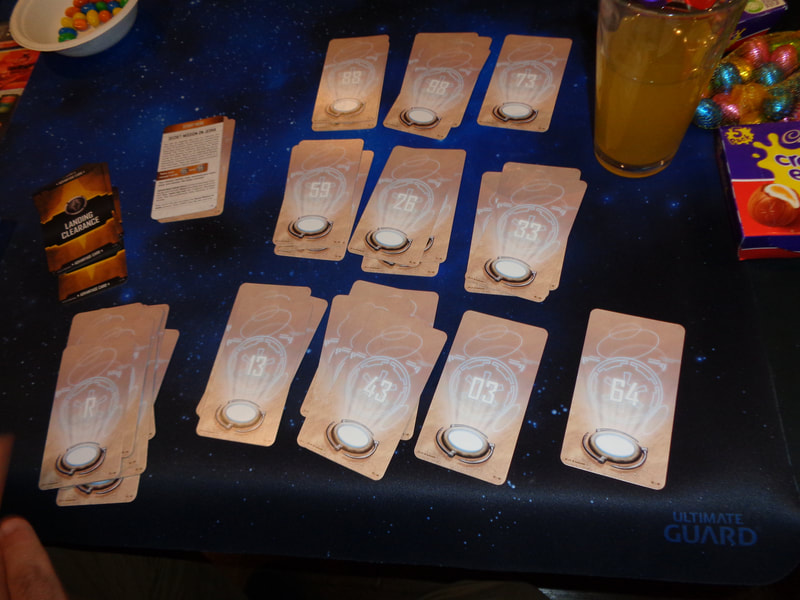
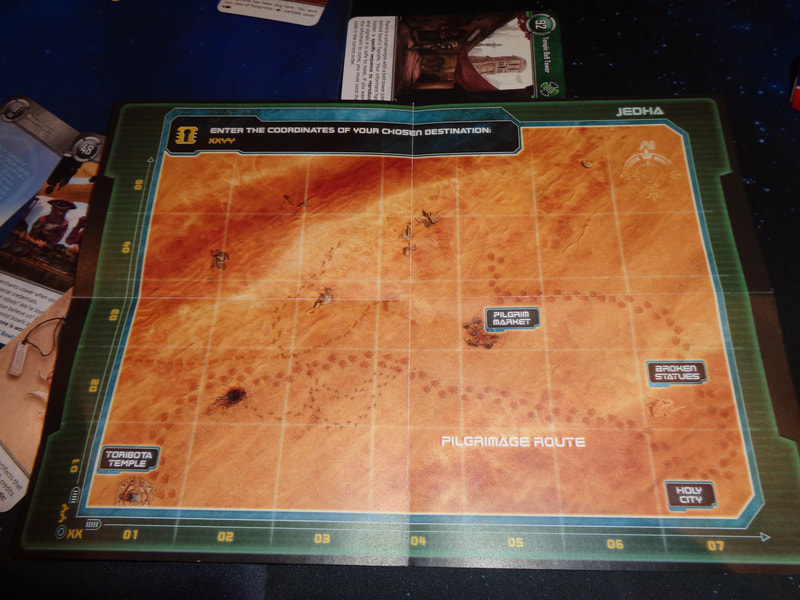
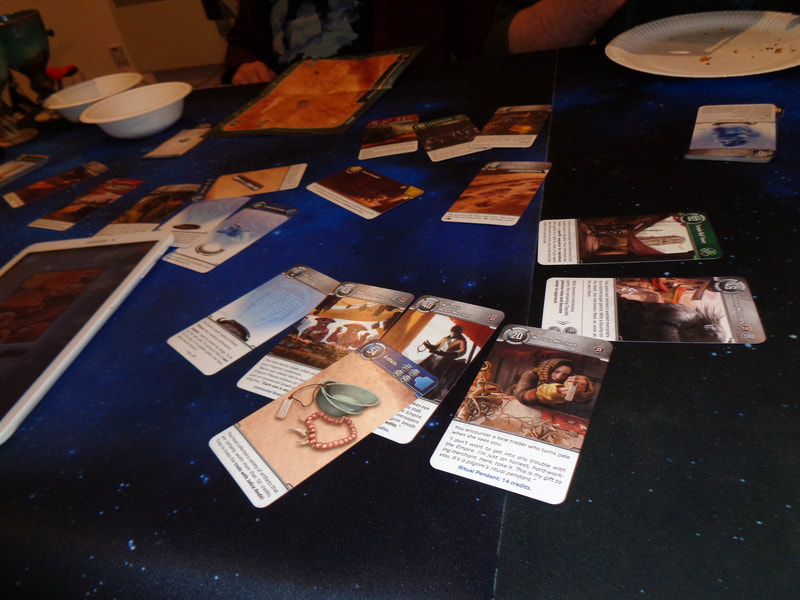
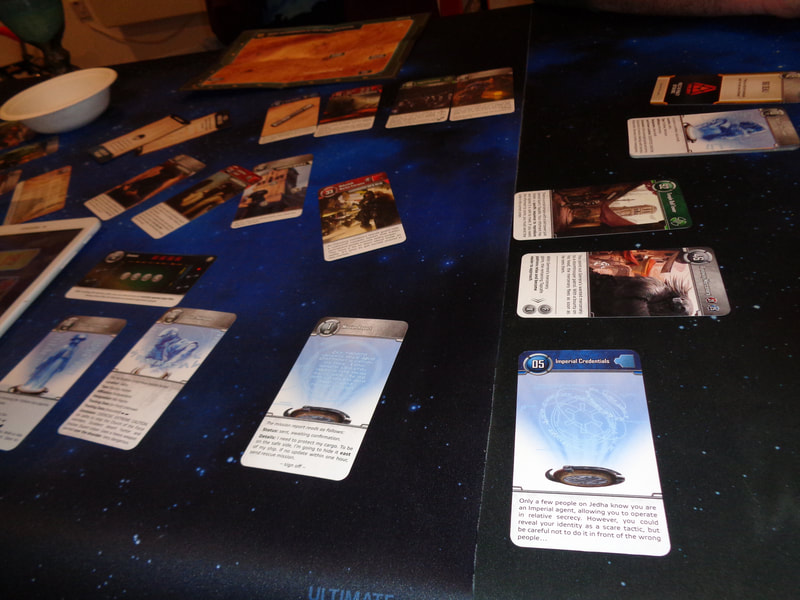
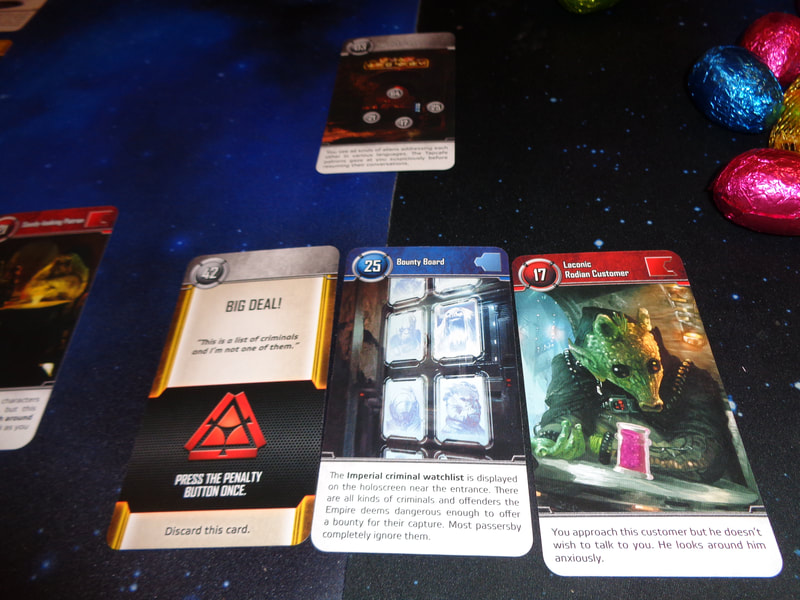
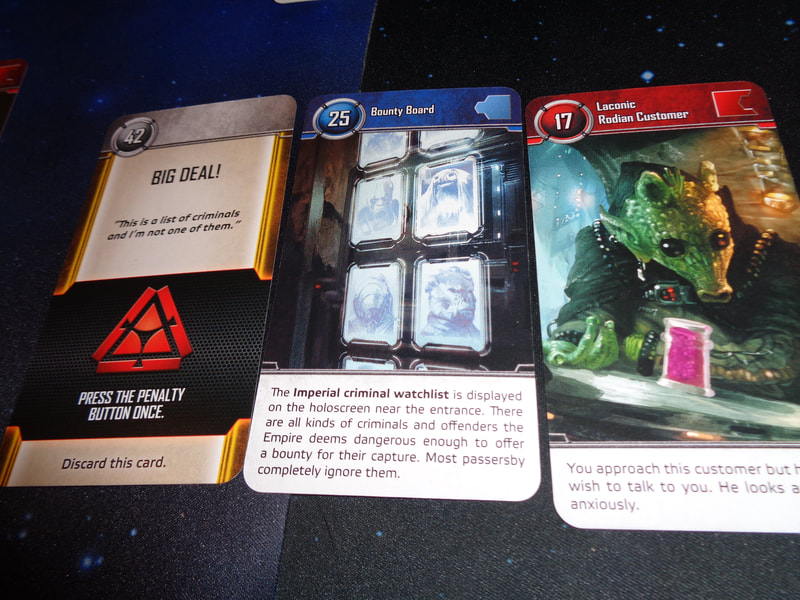
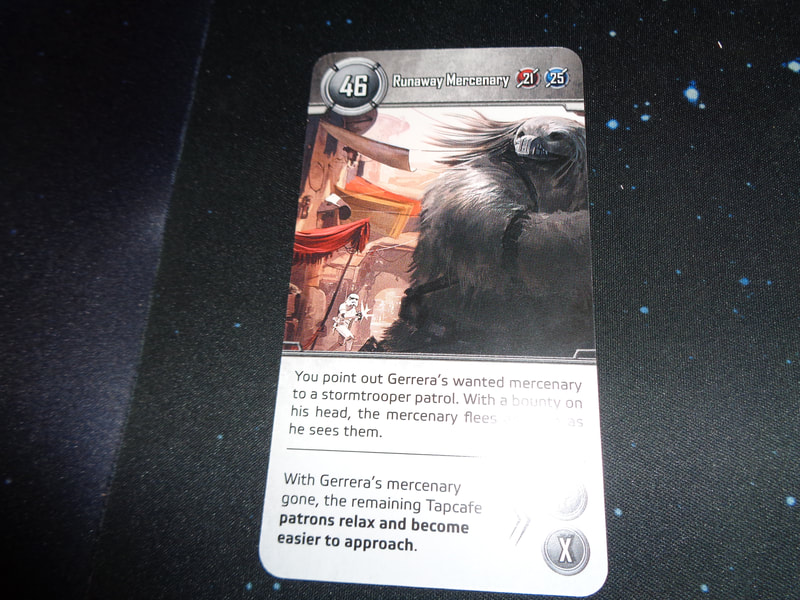
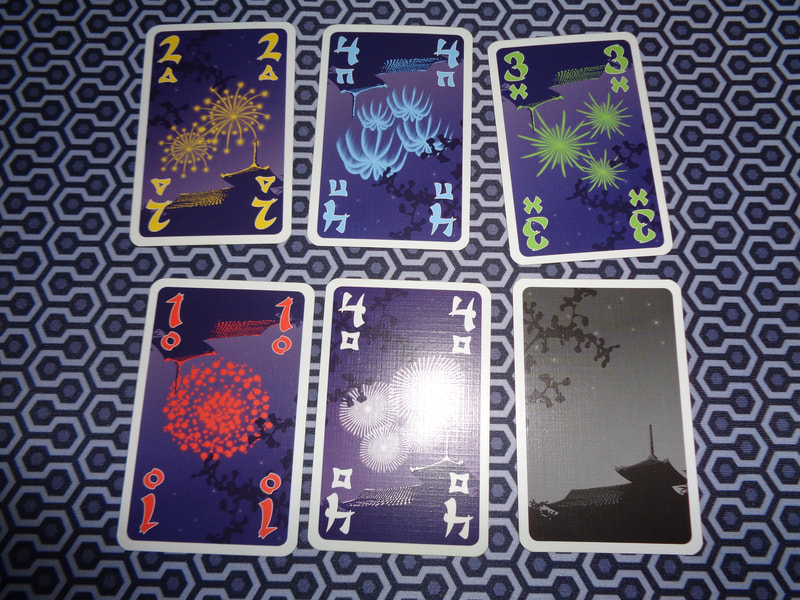

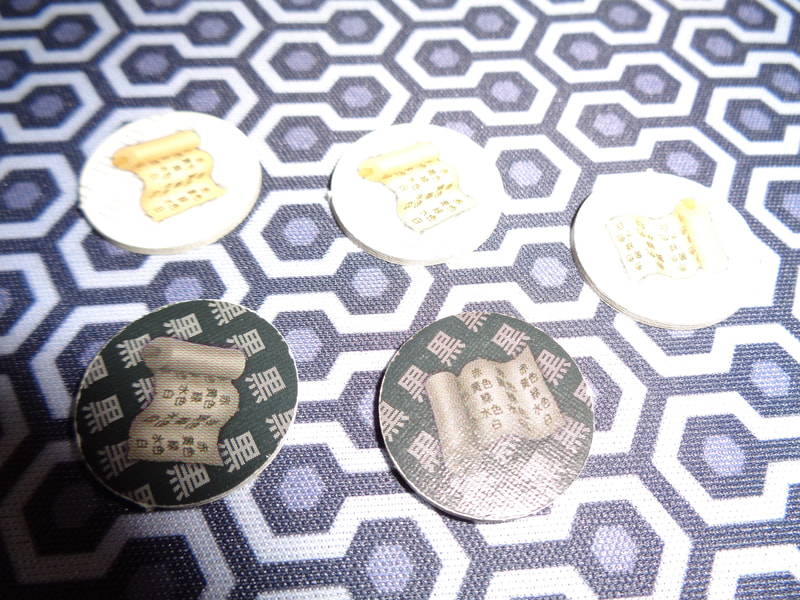
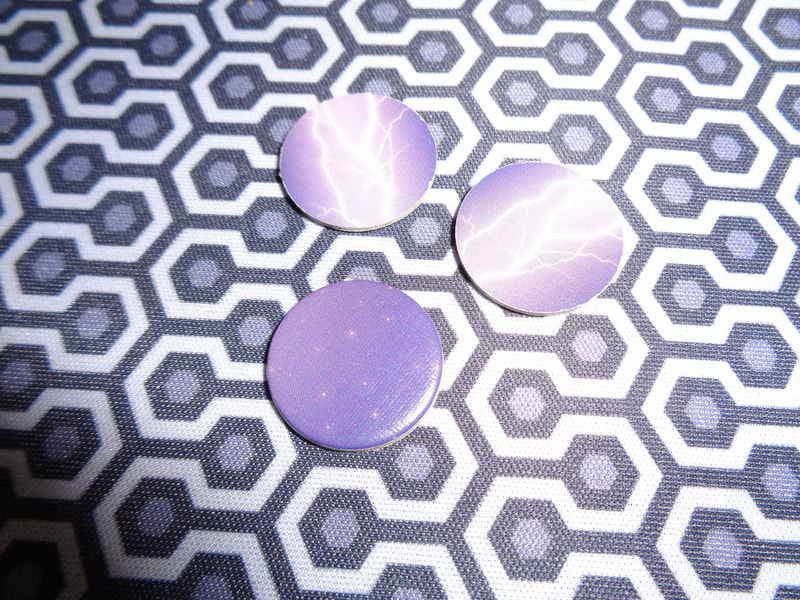
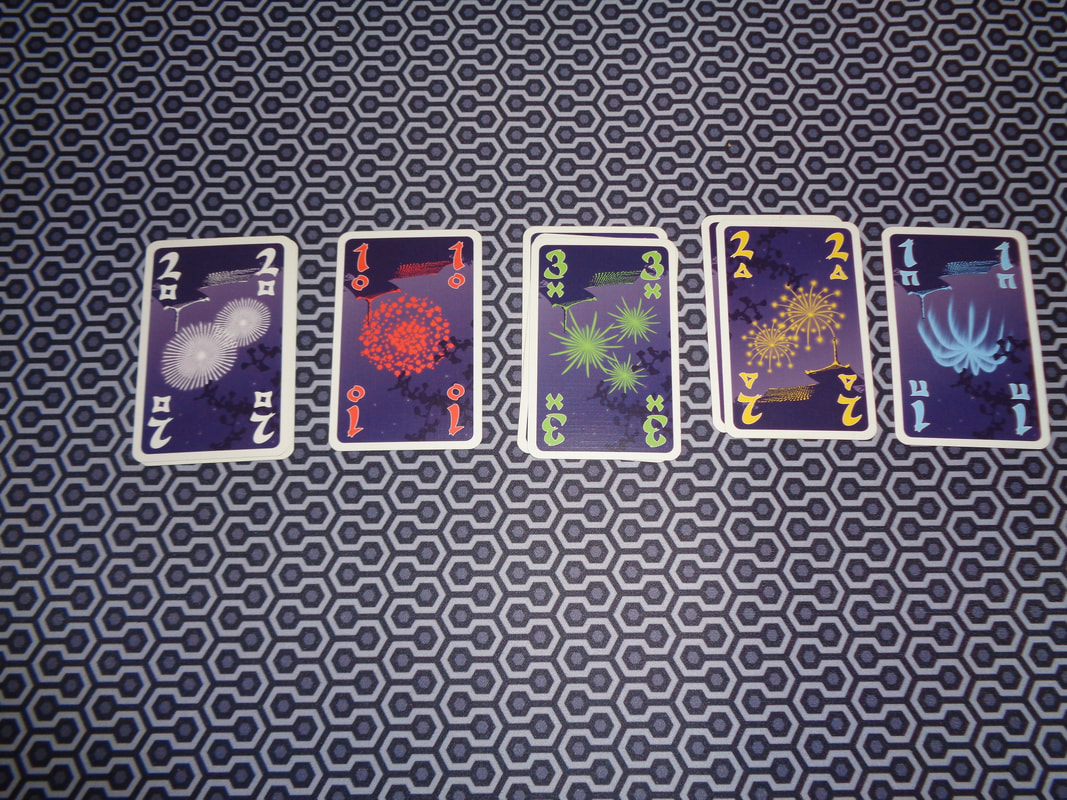
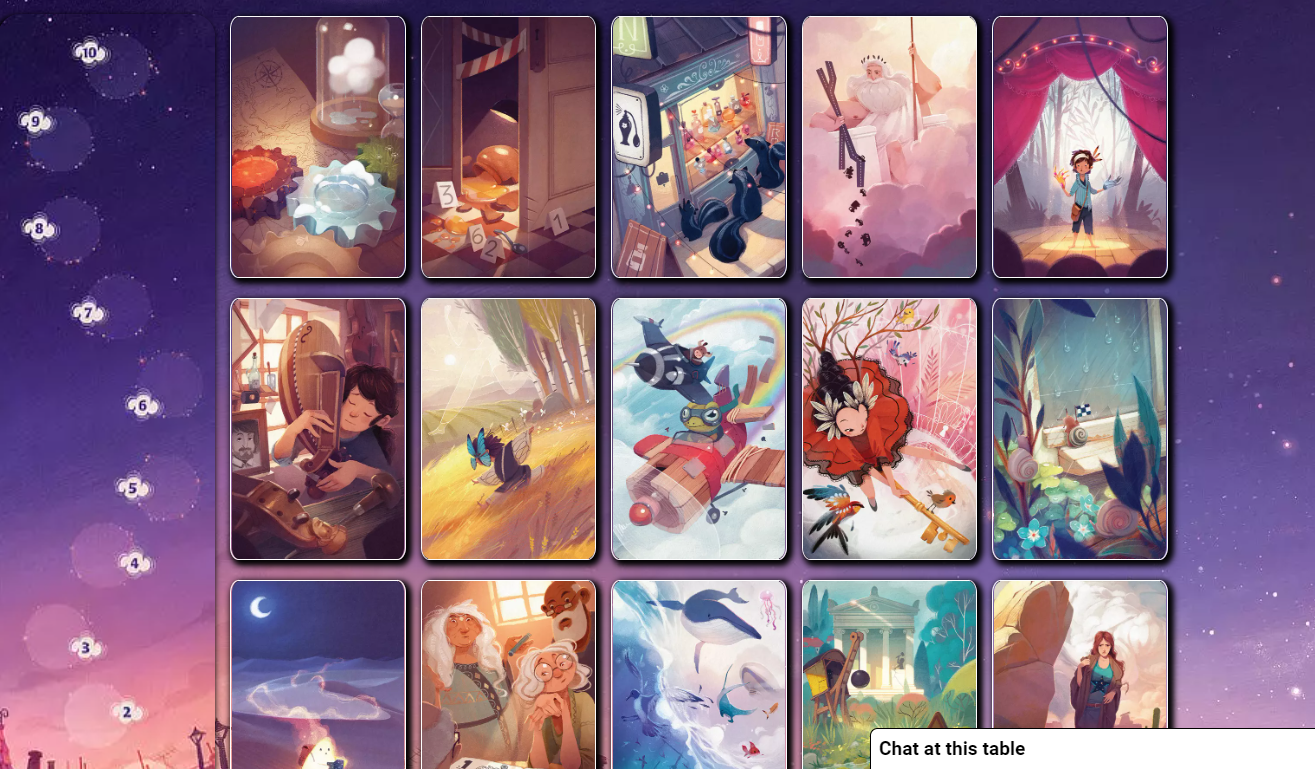
 RSS Feed
RSS Feed
